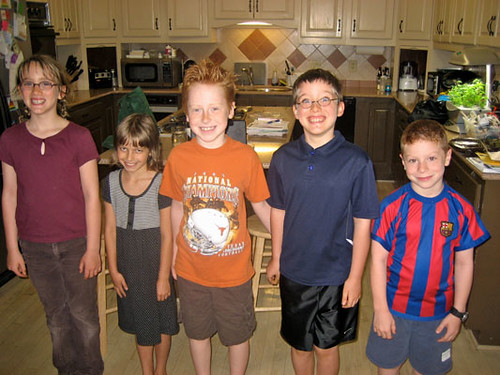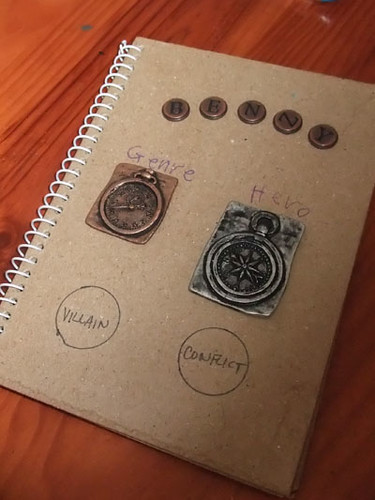I've been homeschooling since my son was born, and always have tried to keep books at the center of our studies. I first published this set of lessons on my homeschooling blog in 2009, when I took my son and a bunch of his elementary school friends through eight weekly lessons about heroes, villains, plot, and conflict: The Junior Secret Noveling Club. I've updated the PDF this year, prompted by several requests for more info about the lessons, and I'm posting the new link here with this excerpt from the intro.
Download the free 40 page lesson plan booklet here.

The process of writing a novel can be broken down for your child into eight lessons. This curriculum is less a curriculum and more a club. Kids will name their club, choose a secret handshake and “oath,” and earn “badges” by doing weekly lessons, games, and activities. By completing these lessons, the student prepares him or herself for the task of writing a novel, without ever getting spooked by the enormity of the task.
 To form your own Junior Secret Novelist Club, you will first need some kids. Six is a good number. For optimal fun and awesomeness, these should be mostly kids who are pretty game. Naysaying kids who are nervous and uncertain will definitely benefit from this course, but there should be a good percentage of kids who will jump in with both feet and not be afraid to get a little crazy. With a few enthusiastic little writers in the mix, the hesitators will be more likely to cast aside doubt and join right in.
To form your own Junior Secret Novelist Club, you will first need some kids. Six is a good number. For optimal fun and awesomeness, these should be mostly kids who are pretty game. Naysaying kids who are nervous and uncertain will definitely benefit from this course, but there should be a good percentage of kids who will jump in with both feet and not be afraid to get a little crazy. With a few enthusiastic little writers in the mix, the hesitators will be more likely to cast aside doubt and join right in.You’ll need a notebook for the kids to write in, do their homework in, and use to collect their exercises. Choose a small notebook, not a standard size, so they can really fill it up. A 3x5 is too small, but an 8x10 is too big. 6x9 is perfect, and recycled paper is cool. Ideally the notebook will have a sturdy front and back cover, since this is where the students will be collecting their badges. You will also need eight very very cool stickers per child that are more like badges than paper stickers. I found three dimensional glossy flower ones for the girls, and metallic compass/clock stickers for the boys. Look in the scrapbooking aisle for something that will really make their eyes go wide.
The key concepts are as follows:
Writing a novel is fun.
Writing a novel can be broken down into easy, manageable steps.
By the time you get to the part where you have a blank page in front of you, you have a solid, detailed plan and lots of material to use in your book.
Planning and writing your own novel helps you become a better reader of books that others have written.
Finishing means getting all your badges, not writing a complete novel and typing The End at the end.
On the front cover of the notebook, mark off four spaces, and label them GENRE, HERO, VILLAIN, and CONFLICT. On the back cover, mark off four more spaces, and label them SETTING, PLOT MAP, ANALYSIS, and CHAPTER LIST. Each week, as the children complete the exercises, you’ll hand out their badges.
The final thing you’ll need is something really super ridiculous to award them at the end of the course. I used a cool-looking paper clip, which became the Official Novel Writing Paperclip. After the final meeting of the club, you will pass out these official totems, and authorize the students to write their novels. Yes, it will be silly, but yes, you very much need something tangible. You could use hats, t-shirts, socks, necklaces, or whatever can be turned into an official, authorized novel writing item.
Kids, notebooks, badges, and a final prize. If you have all that in order, you are ready to begin!




